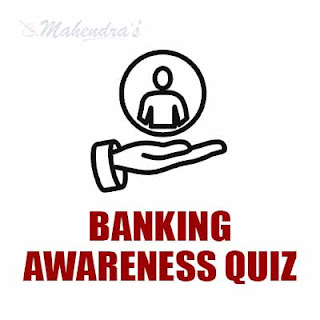
Q1. Which of the following was responsible for regulation of capital markets before SEBI?
(1) RBI
(2) FMC
(3) Controller of Capital Issues
(4) GOI
(5) Securities and Exchange Commission
Q1. सेबी के सामने पूंजी बाजार के नियमन के लिए निम्न में से कौन जिम्मेदार था?
(1) आरबीआई
(2) एफएमसी
(3) राजधानी के नियंत्रक मुद्दे
(4) भारत सरकार
(5) प्रतिभूति और विनिमय आयोग
Q2. On which of the following date, FMC was merged with SEBI?
(1) 28 Sep 2015
(2) 28 Oct 2015
(3) 28 Nov 2015
(4) 28 Dec 2015
(5) 28 Aug 2015
Q2. निम्नलिखित तारीख में से, एफएमसी सेबी के साथ विलय कर दिया गया था?
(1) 28 सितंबर 2015
(2) 28 अक्टूबर 2015
(3) 28 नवंबर 2015
(4) 28 दिसंबर 2015
(5) 28 अगस्त 2015
Q3. Which of the following bank was the second Presidency bank of India?
1) Presidency Bank of Calcutta
2) Presidency Bank of Bengal
3) Presidency Bank of Bombay
4) Presidency Bank of Madras
5) Presidency Bank of Calicut
Q3. निम्नलिखित बैंक में से कौन सा भारत का दूसरा प्रेसीडेंसी बैंक था?
1) कलकत्ता की प्रेसीडेंसी बैंक
2) बंगाल की प्रेसीडेंसी बैंक
3) प्रेसीडेंसी बैंक ऑफ बॉम्बे
4) प्रेसीडेंसी बैंक ऑफ मद्रास
5) प्रेसीडेंसी बैंक ऑफ कालीकट
Q4. The second associate of SBI to get merged with SBI is-
1) State Bank of Bikaner
2) State Bank of Jaipur
3) State Bank of Indore
4) State Bank of Saurashtra
5) State Bank of Mysore
Q4. एसबीआई के दूसरे सहयोगी एसबीआई के साथ विलय करने के लिए-
1) स्टेट बैंक ऑफ बीकानेर
2) स्टेट बैंक ऑफ जयपुर
3) स्टेट बैंक ऑफ इंदौर
4) स्टेट बैंक ऑफ सौराष्ट्र
5) स्टेट बैंक ऑफ मैसूर
Q5. Which of the following is a reason for inflation?
1) Deficit financing
2) Growth in per capita income
3) Structural deficiencies
4) All the above
5) None of these
Q5. निम्न में से कौन सा मुद्रास्फीति का कारण है?
1) डेफिसिट फाइनेंसिंग
2) प्रति व्यक्ति आय में वृद्धि
3) संरचनात्मक कमी
4) उपरोक्त सभी
5) इनमें से कोई नहीं
Q6. An increase in aggregate demand is more likely to lead to demand-pull inflation if:
1) Aggregate supply is perfectly elastic
2) Aggregate supply is perfectly inelastic
3) Aggregate supply is unit elastic
4) Aggregate supply is relatively elastic
5) All the above
Q6. कुल मांग में बढ़ोतरी मुद्रास्फीति की मांग-खींचने की संभावना से अधिक है:
1) कुल आपूर्ति पूरी तरह से लोचदार है
2) कुल आपूर्ति पूरी तरह से स्थिर है
3) कुल आपूर्ति इकाई लोचदार है
4) कुल आपूर्ति अपेक्षाकृत लोचदार है
5) सभी उपरोक्त
Q7. Repo Rate is the rate at which ______.
(1) RBI sell government securities to banks
(2) Banks borrow rupees from RBI
(3) RBI allows small loans in the market
(4) Provide loan to most valued customers
(5) None of these
Q7. रेपो दर वह दर है जिस पर ____.
(1) भारतीय रिजर्व बैंक, बैंकों को सरकारी प्रतिभूतियां बेचता है।
(2) बैंक भारतीय रिजर्व बैंक से धन उधार लेते हैं।
(3) भारतीय रिजर्व बैंक बाजार में छोटे ऋणों की अनुमति देता है।
(4) बैंक अपने सबसे मूल्यवान ग्राहकों को ऋण प्रदान करता है।
(5) इनमें से कोई नहीं
Q8. A saving banks account is -
(1) Generally opened by businessmen
(2) Generally opened by people who have limited monthly income
(3) Generally opened by BPL people
(4) All of the above
(5) All except 3
Q8. एक बचत बैंक खाता ------
(1) आमतौर पर व्यवसायियों द्वारा खोला जाता है
(2) आमतौर पर सीमित मासिक आय वाले लोगों द्वारा खोला जाता है
(4) उपरोक्त सभी
(5) 3 के अतिरिक्त सभी
Q9. RBI was established under the provision of which act?
(1) Reserve Bank of India Act, 1934
(2) Reserve Bank of India Act, 1935
(3) Reserve Bank of India Act, 1936
(4) Reserve Bank of India Act, 1937
(5) Reserve Bank of India Act, 1938
Q9. भारतीय रिजर्व बैंक किस प्रावधान के तहत स्थापित किया गया था ?
(1) भारतीय रिजर्व बैंक अधिनियम, 1934
(2) भारतीय रिजर्व बैंक अधिनियम, 1935
(3) भारतीय रिजर्व बैंक अधिनियम, 1936
(4) भारतीय रिजर्व बैंक अधिनियम, 1937
(5) भारतीय रिजर्व बैंक अधिनियम, 1938
Q10. Didier Drogba , the famous footballer played for which country?
(1) Germany
(2) France
(3) Italy
(4) Ivory Coast
(5) Mexico
Q10. प्रशिद्ध फुटबॉल खिलाडी डिडिएर ड्रोग्बा, किस देश के है?
(1) जर्मनी
(2) फ्रांस
(3) इटली
(4) आइवरी कोस्ट
(5) मेक्सिको
Answer Keys:
Q1. (3)
Q2. (1)
Q3. (3)
Q4. (4)
Q5. (4)
Q6. (1)
Q7. (2)
Q8. (2)
Q9. (1)
Q10. (4)




